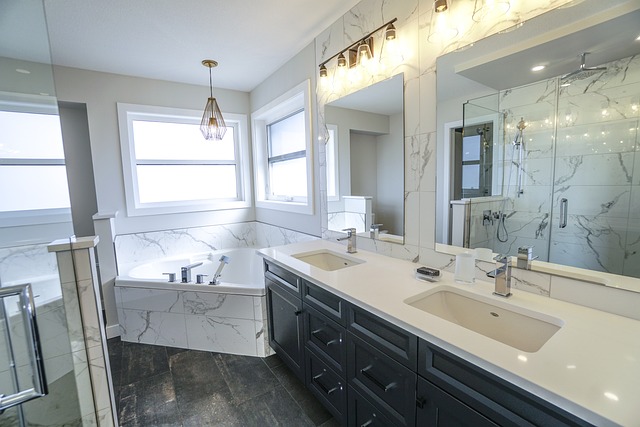When planning a bathroom faucet installation, prioritize balancing style and functionality to meet both design expectations and practical needs. Key considerations include flow rate, temperature control, water conservation features, number of holes required, and special plumbing needs. Start by assessing your budget and personal preferences regarding style, finish, and functionality to choose a faucet that aligns with your aesthetic and enhances the practicality of your bathroom plumbing. Equip yourself with essential tools like adjustable wrenches, plumber's tape, and safety gear to ensure precise measurements, secure connections, and leak-free installations. Properly sizing the faucet and gathering all necessary components from home improvement stores will make the DIY project more manageable, resulting in a seamless integration of new fixtures that complement your bathroom's overall style.
Bathroom Faucet Installation: A Comprehensive Guide for DIYers
Upgrading your bathroom faucet is a great way to refresh your space and improve functionality. This step-by-step guide will walk you through the process of installing a new bathroom faucet, covering everything from choosing the right type to final touches. We’ll explore different faucet styles, gather the essential tools and materials, prepare your bathroom, remove the old faucet, install the new one, test its performance, and offer maintenance tips to ensure a smooth DIY experience. Get ready to tackle this project with confidence and transform your bathroom plumbing!
# Bathroom Faucet Installation: A Step-by-Step Guide on Bathroom Plumbing
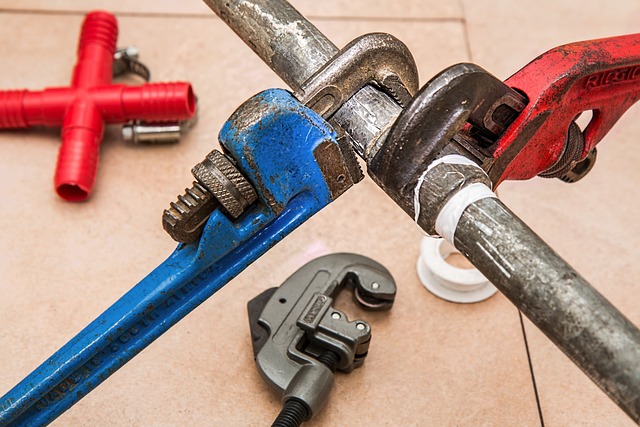
When it comes to bathroom plumbing, installing a new faucet is a common task that many homeowners can take on themselves. Before starting, gather the necessary tools and materials: an adjustable wrench or pliers for removing existing parts, a new faucet assembly with all its components, plumber’s tape, and a bucket to catch any excess water. The first step involves shutting off the water supply to your bathroom. Locate the shut-off valves under the sink, usually near the wall, and turn them clockwise to stop the flow. Once the water is turned off, you can begin disassembling the old faucet by removing the handle and spout. Use your tools to loosen the connections and carefully take them apart, paying attention to how each piece fits together for easy reassembly later.
After removing the old parts, prepare the new faucet by following the manufacturer’s instructions. This may include installing the aerator, which controls water flow and temperature, as well as attaching the supply lines. Use plumber’s tape to ensure secure connections and prevent leaks. When everything is in place, double-check that all components are tightly secured. Finally, turn on the water supply valves and test the new faucet to ensure it functions correctly. If there are any leaks or issues, refer back to your instructions or seek guidance from a plumbing professional.
<section id="choosing-the-right-faucet-for-your-bathroom“>
Choosing the Right Faucet for Your Bathroom
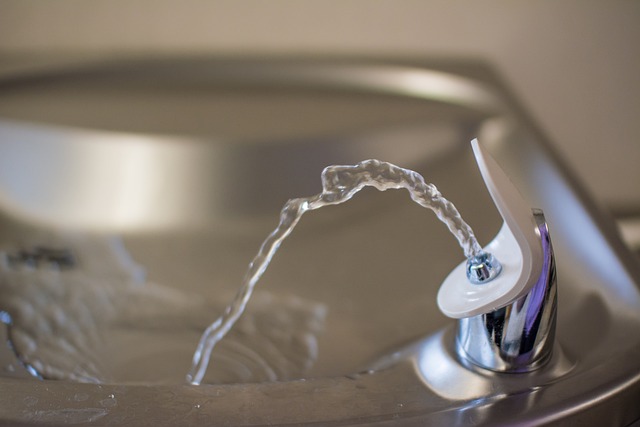
When it comes to bathroom faucet installation, choosing the right faucet is a crucial step in ensuring both functionality and aesthetics. Consider your bathroom’s style and the overall design of your space when selecting a faucet. Modern bathrooms may benefit from sleek, contemporary designs with clean lines and minimal handles, while traditional or rustic bathrooms could look better suited with more ornate faucets featuring intricate details and classic shapes. Additionally, think about the features you want, such as pull-down or spray heads for enhanced cleaning power, temperature controls for precise adjustments, or touchless technology for hands-free operation, all of which can greatly improve your bathroom plumbing experience.
The type of faucet handle and spout also plays a significant role in creating a functional and comfortable sink area. Single-handle faucets are popular due to their ease of use and ability to control both water flow and temperature with a single lever. Dual-handle faucets offer more traditional aesthetic appeal but require separate manipulation of each handle for water temperature and pressure adjustments. Spout design should also match your style preferences, from low-arc models that arc gently upward for a more traditional look to high-arc or wall-mount spouts that provide extra clearance for larger sinks, ensuring you select the right faucet for your specific bathroom needs and existing plumbing setup.
– Understanding different types of faucets (e.g., single-handle, dual-handle, touchless) and their features.
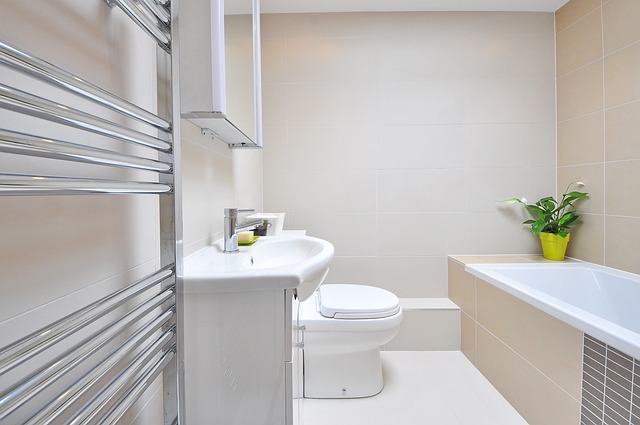
When it comes to bathroom plumbing, the faucet is often the most frequently used and essential fixture. Understanding the different types available is crucial for any DIY installation or renovation project. Single-handle faucets are the most common, offering a simple lever or knob to control both temperature and water flow. They are versatile, easy to use, and suitable for various bathroom styles. Dual-handle faucets provide separate controls for hot and cold water, allowing for precise temperature adjustments, but they may require more maintenance due to their additional components.
Touchless faucets have gained popularity for their convenience and modern aesthetic. These sensors detect hand movement and automatically turn on and off the water flow. They reduce the risk of cross-contamination and are ideal for public restrooms or households with young children. Each type has unique features catering to different user preferences, so choosing the right faucet involves considering not just aesthetics but also functionality and practicality in terms of Bathroom Plumbing.
– Considerations for bathroom style and functionality.

When planning a bathroom faucet installation, it’s crucial to consider both style and functionality. The sink and faucet should complement your bathroom’s overall aesthetic while also meeting your practical needs. For instance, a contemporary bathroom might call for a sleek, minimalist faucet with clean lines, whereas a traditional or rustic space may suit a more ornate design.
Functionality is another key aspect. Think about the flow rate, temperature control, and water conservation features you desire. Some faucets offer advanced technologies like sensor operation or touchless controls for hands-free use, enhancing both convenience and hygiene. Additionally, consider the number of holes needed to accommodate your faucet, as well as any special requirements for bathroom plumbing to ensure a smooth installation process.
– Tips on selecting a faucet that aligns with your budget and preferences.

When considering bathroom faucet installation, selecting the right fixture is a crucial step. Start by evaluating your budget to ensure you choose a faucet that aligns with your financial plans. Remember, options range from affordable basic models to high-end, feature-rich designs. Striking a balance between cost and quality is key; opt for a faucet with solid construction and durable materials to ensure longevity, even if it’s on the higher end of your budget.
Consider your personal preferences as well—style, finish, and functionality. Modern, traditional, or rustic designs are available to suit different bathroom aesthetics. Additionally, think about specific features you desire, such as water temperature control, pull-down sprayers, or touchless sensors, which can enhance both the look and practicality of your new faucet. Incorporating these factors into your decision will ensure a satisfactory bathroom plumbing upgrade tailored to your unique needs and tastes.
<section id="gathering-the-necessary-tools-and-materials“>
Gathering the Necessary Tools and Materials
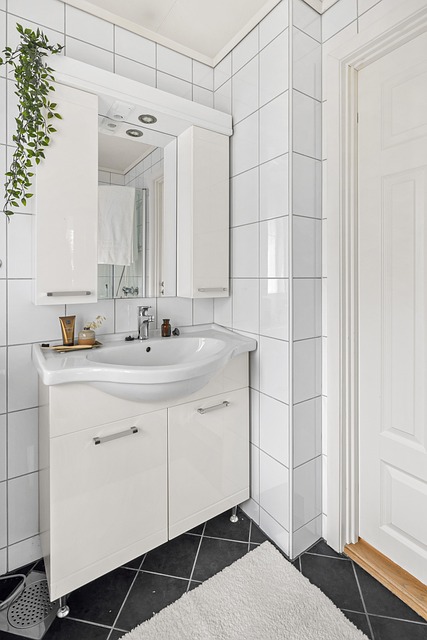
When tackling a bathroom faucet installation project, having the right tools and materials is paramount for a successful outcome. For this task, your toolkit should include basic plumbing tools such as pipe wrenches, adjustable wrenches, pliers, and a set of screwdrivers. These tools will help you disconnect existing pipes, install new ones, and tighten connections securely. Additionally, ensure you have the necessary parts, including the faucet itself, drain assembly, supply lines, and any seals or gaskets required for your specific bathroom plumbing setup.
It’s also advisable to gather safety gear, such as protective gloves and glasses, to safeguard yourself from potential hazards during installation. Measuring tape and markers will assist in marking pipe locations accurately, while a level ensures that the faucet is installed straight and true. Proper preparation with these tools and materials will make your bathroom faucet installation process smoother and more efficient.
– Comprehensive list of tools required for installation (e.g., wrenches, pliers, teflon tape).

Installing a new bathroom faucet is a relatively straightforward process, but it requires the right tools and materials to ensure a successful and leak-free job. For most standard bathroom plumbing setups, you’ll need a variety of hand tools such as adjustable wrenches, channel lock pliers, and a pair of needle-nose pliers. Don’t forget Teflon tape or pipe compound, which is essential for sealing connections and preventing leaks. A new faucet with all its components, along with any necessary hardware from your local home improvement store, should provide you with most, if not all, the tools needed for installation.
Before beginning, double-check that you have everything required and lay them out in a logical order to avoid misplacing any parts. Properly sizing the faucet to fit your existing plumbing is crucial; ensure your new faucet matches the dimensions of your current setup to avoid unnecessary frustration or additional purchases. With the right tools at hand, you’ll be ready to tackle this DIY project with confidence and end up with a fresh, functional bathroom faucet.
